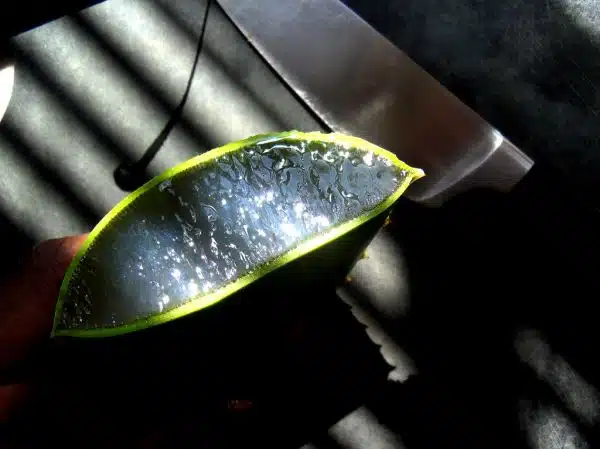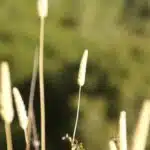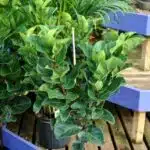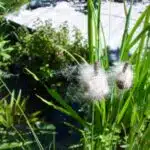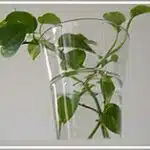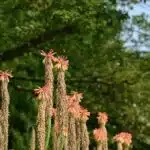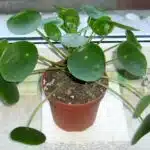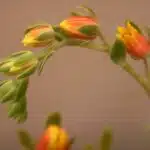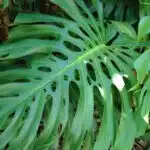Aloe vera is a popular succulent known for its medicinal properties and ornamental value. This plant is easy to propagate, making it a great addition to any gardener’s collection. Propagating aloe vera can be done through leaf cuttings, offsets or pups, and seeds. However, each method requires different techniques and care to ensure successful propagation.
As a plant propagation specialist, I have seen the benefits of growing aloe vera firsthand. Not only does this plant enhance the aesthetic appeal of one’s surroundings, but it also offers tremendous health benefits that make it an essential addition to any home garden. In this article, we will explore the various methods of propagating aloe vera and provide practical tips on how to care for your new plants. Whether you are an experienced gardener or just starting out, our guide will equip you with the necessary skills to successfully propagate healthy aloe vera plants that can serve both yourself and others in need of its healing properties.
Understanding Aloe Vera Propagation
Aloe vera is a popular succulent plant that is commonly grown for its medicinal and ornamental purposes. According to recent studies, an estimated 95% of households in the United States own at least one indoor plant, and aloe vera is often among the top choices. Propagation techniques are an essential aspect of cultivating a healthy and robust aloe vera plant. Understanding the growth stages of aloe vera can help gardeners make informed decisions about when and how to propagate their plants.
Propagation techniques for aloe vera include both sexual and asexual reproduction methods. Sexual propagation involves seed germination, while asexual propagation involves using vegetative structures such as offsets or stem cuttings to produce new plants. Asexual propagation is often preferred by gardeners since it results in genetically identical clones of the parent plant with desirable traits.
Aloe vera plants go through several growth stages, including juvenile, vegetative, reproductive, and senescent stages. Juvenile plants are characterized by small rosettes with thin leaves that gradually thicken as they mature into the vegetative stage. During this stage, plants develop numerous leaves and form offsets that can be used for propagation. The reproductive stage is marked by the development of flowers on tall stalks, while senescent plants exhibit signs of aging such as yellowing leaves and reduced vigor. Understanding these growth stages is crucial for determining optimal propagation times for a healthy aloe vera plant.
Growing your own aloe vera has many benefits beyond just aesthetics; it can help purify indoor air quality, provide natural remedies for minor burns or cuts, and promote overall well-being. In the following section, we will explore some of these benefits in more detail to inspire you to start growing your own thriving aloe vera plant.
Benefits Of Growing Aloe Vera
Understanding the propagation of aloe vera is essential for those seeking to cultivate this versatile plant. Aloe vera has numerous uses and applications, including its medicinal properties and skincare benefits. Cultivating aloe vera requires proper cultivation techniques, whether growing indoors or outdoors.
When it comes to harvesting and storage, proper care is necessary to ensure that the plant’s beneficial properties are preserved. Aloe vera plant care involves regular watering and occasional fertilization, as well as protection from extreme temperatures. Propagation mistakes should be avoided, such as overwatering or using inappropriate soil types.
Troubleshooting common propagation issues can also help prevent failure in cultivating aloe vera sustainably. These issues may include inadequate sunlight exposure or pest infestations. Choosing the right method for propagation is crucial in ensuring successful growth of new plants. Whether through offsets, seedlings, or cutting leaves, each method requires specific care techniques to maximize growth potential.
In summary, understanding the various aspects of cultivating aloe vera is critical for sustainable cultivation practices. From understanding the plant’s uses and applications to mastering proper cultivation techniques and avoiding common mistakes during propagation, growing healthy aloe vera plants requires attention to detail and patience. By following recommended care guidelines and troubleshooting any issues that arise during propagation carefully, growers can ensure long-term success in cultivating this valuable plant.
Choosing The Right Method For Propagation
- Seed propagation is a tried and true method for propagating Aloe Vera, however it is time consuming and requires a great deal of patience.
- Stem cuttings can be a great way to propagate Aloe Vera quickly, but it is important to take larger cuttings and to use a rooting hormone to increase the chances of success.
- Offset division is the quickest and easiest way to propagate Aloe Vera, as it requires no rooting hormone and the division can usually be done in one move.
- When choosing a propagation method for Aloe Vera, seed propagation should be considered if the grower has the patience and the extra time required for germination and seedlings to mature.
- Stem cuttings are a great option for those who are looking for a faster propagation method, but should be done with larger cuttings and with a rooting hormone for best results.
- Offset division is the best method for those looking for a quick, easy, and reliable propagation of Aloe Vera plants.
Seed Propagation
When it comes to propagating aloe vera, seed propagation is an option. However, it is not the most common method used due to the difficulty in obtaining viable seeds from mature plants. Seed storage can be challenging since aloe vera seeds have a short shelf life and require specific conditions for long-term storage.
Germination techniques for aloe vera seeds involve planting them in well-draining soil or using a seed-starting mix. The soil should be kept moist but not too wet to prevent rotting of the seeds. Lightly covering the seeds with soil can help retain moisture and increase germination rates. It is also essential to maintain a warm temperature of around 75-80°F for optimal germination.
Hybridization and cross-pollination can lead to new varieties of aloe vera plants. However, this requires specific knowledge and skills as well as access to different varieties of plants for successful breeding. Controlled pollination techniques such as hand pollination or selective breeding are necessary to ensure desirable traits are passed down in the offspring. Overall, while seed propagation can be an option for propagating aloe vera, other methods such as vegetative propagation may be more practical and efficient.
Stem Cuttings
When it comes to propagating aloe vera, there are alternative methods that can be more efficient than seed propagation. One of these methods is stem cuttings. Stem cutting propagation involves taking a piece of the parent plant’s stem and rooting it to produce a new plant. This method is popular because it is relatively easy and allows for the production of multiple plants from one parent plant.
To propagate aloe vera using stem cuttings, select a healthy, mature leaf or stem from the parent plant. Use a sharp, clean knife or scissors to cut off a section of the leaf or stem that is at least 3-4 inches long. Let the cutting dry for several hours before planting it in well-draining soil or a seed-starting mix. Keep the soil moist but not too wet and place the cutting in bright, indirect sunlight.
One common mistake when propagating aloe vera using stem cuttings is overwatering. Overwatering can lead to rotting of the cutting and ultimately failure to root. It is also essential to avoid exposing the cutting to direct sunlight as this can cause damage and inhibit rooting. With proper care and attention, however, stem cuttings can be an effective way to propagate aloe vera plants with desirable traits such as color, size, and leaf shape.
Offset Division
As a plant propagation specialist, it’s important to have a variety of methods in mind when choosing the right way to propagate aloe vera. One such method is offset division. This technique involves separating baby plants (offsets) that grow from the base of the parent plant and transplanting them into their own pots. Offset division can be an efficient way to produce multiple aloe vera plants quickly.
When propagating aloe vera using offset division, it’s essential to take care of the offsets during and after separation. Gently remove the offset from the parent plant by digging around its base with a clean knife or trowel. Be sure to separate it from any roots that may be present. Once separated, allow the cut edge of the offset to dry for several hours before planting in well-draining soil. Water sparingly until new growth appears.
Propagation tips for offset care include keeping the newly transplanted offsets out of direct sunlight while they establish themselves in their new environment. It’s also important not to overwater as this can cause root rot and other issues. With proper care and attention, however, offset division can be an effective way to propagate healthy, thriving aloe vera plants with ease.
Propagation Via Leaf Cuttings
Despite popular belief, propagating aloe vera through leaf cuttings is not as simple as it seems. While the succulent nature of aloe vera leaves may make it seem like an easy process, there are certain challenges that come with this method. One of the key obstacles is the structure of the leaves themselves. Aloe vera leaves have a thick outer layer and a gel-like interior, which makes them prone to rotting if not handled properly.
However, with proper technique and attention to detail, propagating aloe vera through leaf cuttings can be successful. One important step in this process is the use of rooting hormone. This hormone helps stimulate root growth in the cutting and increases its chances of survival. Rooting hormone can be purchased at most garden centers or online.
To begin propagating via leaf cuttings, carefully select healthy leaves from your mature aloe vera plant. Using a sharp knife or scissors, remove a leaf from the base of the plant and let it dry for several days until the wound has calloused over. Once this has occurred, dip the end of the cutting in rooting hormone and plant it in well-draining soil. Place it in bright but indirect light and water sparingly until roots begin to form.
With proper care and attention, propagating aloe vera through leaf cuttings can be an excellent way to expand your collection or share with others. In preparation for planting your cuttings, there are several steps you should take to ensure success. These include selecting healthy leaves from mature plants, allowing them to callous over before applying rooting hormone, and planting them in well-draining soil under optimal growing conditions. By following these steps, you can increase your chances of successfully propagating new aloe vera plants through leaf cuttings.
Preparing Leaf Cuttings For Propagation
Leaf preparation is a crucial step in the process of propagating Aloe Vera. The success of propagation largely depends on how well the leaf cuttings are prepared. Proper preparation of leaf cuttings ensures that they have enough nutrients to develop roots and grow into healthy plants.
To prepare leaf cuttings for propagation, select mature and healthy leaves from the Aloe Vera plant. Make sure that the leaves are at least 4-5 inches long and have a width of about an inch. Using a sharp knife, make a clean cut at the base of the leaf where it meets the stem. Leave the cut leaf out in open air for at least 24 hours. This will allow the wound to heal and prevent infections.
After leaving out in open air, remove any dry or damaged parts from the base of the cutting using a clean pair of scissors or knife. Ensure that you leave about half an inch below where you made your previous cut to allow for root development. After preparing your cutting, you can now proceed to rooting it in a suitable medium such as soil or sand.
- Use only mature and healthy leaves for propagation.
- Allow your cutting to heal for at least 24 hours before planting.
- Remove any dry or damaged parts from your cutting before planting.
- Leave about half an inch below where you made your previous cut to allow for root development.
Leaf preparation is essential to propagate Aloe Vera successfully. By following these simple steps, you can prepare your leaf cutting correctly, ensuring it has all it needs to develop roots and grow into a healthy plant that can serve a variety of uses in serving others effectively. In the subsequent section, we will discuss how to root leaf cuttings properly without wasting time or resources during this process.
Rooting Leaf Cuttings
To propagate Aloe Vera through leaf cuttings, the first step is to prepare the cuttings by removing a lower leaf from the plant and cutting it into two or three pieces.
The leaf should then be allowed to callous in a dry, shaded area before planting it.
The cuttings should then be planted in a well-draining potting soil mix and kept in a warm, bright location.
The soil should be kept consistently moist and the cuttings should be monitored for signs of new root growth.
Preparing Cuttings
So you want to propagate aloe vera? One way is by rooting leaf cuttings, which involves taking a healthy leaf from the mother plant and planting it in soil until it grows its own roots. To prepare for this process, the first step is soil preparation. Use a well-draining mix of sand, perlite, and peat moss to ensure that water won’t accumulate in the pot and rot the cutting. A good watering technique is to moisten the soil before planting and then water sparingly until the cutting takes root.
Next, gather your materials for preparing cuttings. You’ll need a sharp knife or scissors to cleanly remove a leaf from the base of the mother plant. Choose a mature leaf that is at least four inches long and has no signs of damage or disease. After removing it from the plant, let it sit out in a shaded area for 24 hours so that the wound can dry out and prevent infection.
Lastly, get ready to plant your cutting. Dig a hole in your prepared soil deep enough for about two-thirds of the length of your cutting’s stem to be buried. Insert your cutting into the hole and gently firm up soil around it. Water sparingly as needed until new growth appears, indicating successful root development. With these steps in mind, propagating aloe vera through rooting leaf cuttings can be an easy and rewarding experience!
Planting Cuttings
Rooting leaf cuttings is an effective way to propagate aloe vera and expand your collection of this beneficial plant. Once you have prepared the soil, the next step is planting your cuttings. It is important to note that planting cuttings can be tricky, and there are some common mistakes that should be avoided.
When planting your aloe vera cuttings, it’s crucial to ensure that they are planted at the right depth. Planting too deep can lead to rotting, while planting too shallow can cause drying out. Additionally, over-watering or under-watering can both hinder root development and cause the cutting to die. To avoid these mistakes, make sure you are using well-draining soil and only watering when necessary.
In conclusion, successfully rooting and planting aloe vera cuttings requires careful attention to detail but is ultimately rewarding for those who enjoy growing their own plants. By avoiding common mistakes in planting and providing proper care, you can enjoy the benefits of aloe vera for years to come.
Propagation Via Offsets Or Pups
Propagation of aloe vera is a popular method for growing new plants that have the same characteristics as the parent plant. There are various propagation methods to choose from, but one effective way is through offsets or pups. This method involves separating the baby plants from the parent plant and transplanting them into their own containers.
To start the rooting process, look for offsets or pups that are at least 3 inches tall and have developed their own root systems. Carefully remove the soil around the base of the pup using a small, sharp knife or scissors. Make sure to cut as close to the mother plant as possible without damaging its roots. Once you have separated it from the parent plant, allow it to dry for a day before planting.
When planting, choose a pot with good drainage and fill it with well-draining soil mix. Place the pup in the center of the container, making sure that its roots are buried deep enough in soil. Water sparingly initially and gradually increase your watering frequency as your plant grows.
In summary, propagating aloe vera via offsets or pups is an easy way to grow new plants that have similar traits as their parent plant. The key is to carefully separate them from their mother plant and give them proper care when planting. In our next section, we will talk about how to properly separate offsets or pups from their parent plant without causing damage.
Separating Offsets Or Pups From The Parent Plant
After successfully propagating Aloe Vera via offsets or pups, the next step is to separate them from the parent plant. This process is also known as harvesting pups. It’s essential to wait until the offset has grown roots and has enough leaves before separating it from the parent plant. Separating too early can damage both plants and inhibit growth.
To harvest pups, begin by removing any soil around the base of the parent plant. Gently lift the offset from its base using a sharp, sterilized knife or scissors. Try to keep as many roots attached to the pup as possible while ensuring that you don’t damage the roots of either plant in the process. Once separated, gently remove any excess soil from both plants and repot them into individual pots with well-draining soil.
Parent plant maintenance is crucial for successful aloe vera propagation. After separating an offset or pup, ensure that you continue caring for the parent plant by watering and fertilizing it regularly. When caring for newly separated offsets or pups, it’s vital to place them in a location with bright but indirect sunlight and avoid overwatering them. Overwatering can lead to root rot, which can be fatal for young plants. With proper care and maintenance, your aloe vera plants will thrive and produce more offsets for future propagation efforts.
Caring For New Offsets Or Pups
As the saying goes, “From small beginnings come great things.” This is especially true for propagating aloe vera through offsets or pups. These small offshoots that grow alongside the parent plant can be separated and planted to produce new, healthy plants. However, it is important to care for these new offsets properly to ensure their success.
Firstly, it is crucial to water the newly planted offsets regularly but not excessively. Overwatering can cause root rot and kill the plant, while underwatering can cause dehydration and stunted growth. Aim to water your aloe vera once every two weeks or when the soil feels dry to the touch.
Additionally, proper lighting requirements are also essential for healthy offset growth. Aloe vera prefers bright but indirect sunlight, so place your plant near a window with plenty of natural light. Avoid placing it in direct sunlight as this can scorch its leaves and damage the plant.
To summarize, caring for new aloe vera offsets involves regular watering and providing adequate lighting conditions. Here are some additional tips:
- Use well-draining soil to prevent waterlogging
- Allow soil to dry out between waterings
- Fertilize sparingly during growing season
- Remove dead leaves or debris from around the base of the plant
Incorporating these practices into your care routine will help your new aloe vera pups thrive and grow into mature plants. Next up, we’ll explore propagating aloe vera via seeds and delve deeper into its unique growth characteristics.
Propagation Via Seeds
Aloe vera propagation via seeds is a viable option for those who wish to start a new plant. However, it is important to note that seed viability can be low and inconsistent, so it may require multiple attempts to successfully propagate through this method. It is also essential to source high-quality seeds from reputable suppliers or by harvesting them from mature plants.
To increase the likelihood of successful propagation, proper seed storage techniques should be employed. Seeds must be kept in a cool and dry environment, away from direct sunlight and moisture. Air-tight containers such as zip-lock bags or glass jars can prolong seed viability, but it is crucial to check for mold or moisture regularly. Old or damaged seeds should be discarded as they are unlikely to germinate.
In summary, propagating aloe vera through seeds requires patience and careful attention to detail. While seed viability can be unpredictable, storing seeds in optimal conditions can increase success rates. In the next section, we will discuss how to prepare aloe vera seeds for propagation.
Preparing Seeds For Propagation
Seed selection is an important aspect of a successful aloe vera propagation. It is essential to choose the right seeds for germination. The best way to select seeds is to purchase them from a reputable nursery or online store. Make sure that the seeds are fresh and haven’t exceeded their expiration date.
Once you have selected your seeds, it’s time to prepare them for germination. Begin by cleaning the seeds with water and removing any debris or dirt on their surface. Then, soak the seeds in water for 24 hours to help soften their outer layer and facilitate germination. After soaking, place the seeds on a damp paper towel and seal them in a plastic bag before storing them in a warm, dark place.
The germination process of aloe vera seeds takes about two weeks. During this period, make sure that the paper towel remains moist and check daily for any signs of sprouting. Once they have sprouted, it’s time to transfer the seedlings into pots filled with well-draining soil mixtures. Adequate sunlight exposure and regular watering are necessary to ensure healthy growth of your newly propagated plants.
Transitioning into the subsequent section: With proper care, you can successfully grow aloe vera from seedlings! In the next section, we will discuss how to effectively germinate your aloe vera seeds and nurture them into strong and healthy plants that will serve as natural remedies for various ailments.
Germinating Aloe Vera Seeds
- Aloe Vera seeds germinate best in a soil mix with good drainage, such as a combination of peat moss and perlite.
- The ideal temperature for germination is between 24°C and 27°C.
- The seeds should be sowed shallowly in the soil, and lightly covered with additional soil mix.
- When selecting seeds, look for healthy seeds that are plump, dark, and uniform in size.
- The germination process should be monitored carefully, as the seeds may take up to six weeks to germinate.
- Once the seedlings have emerged, the soil should be kept lightly moist, but not wet.
Germination Process
Aloe vera is a succulent plant that can be propagated through seeds. The germination process of aloe vera seeds requires careful attention and nurturing to ensure successful seedling growth. As a plant propagation specialist, I would like to share with you some tips on how to germinate aloe vera seeds effectively.
To start the germination process, it is important to have fresh and viable seeds. Aloe vera seeds are small and black, and they can be easily collected from mature plants. After collecting the seeds, prepare a well-draining soil mixture by mixing sand, perlite, and peat moss. Moisten the soil mixture before sowing the seeds on top of it. Cover the seeds lightly with more soil mixture and keep them moist but not soaked. Place the container in a warm location with bright but indirect sunlight.
Nurturing seedlings requires patience and attention to detail. Keep checking the moisture level of the soil mixture daily and water when needed. Once the seedlings have grown their second pair of leaves, transplanting techniques can be employed to move them into individual pots or outdoors in well-draining soil with partial shade. With proper care and maintenance, your aloe vera seedlings will grow into healthy plants that you can enjoy for years to come.
Seed Selection
A crucial factor to consider when germinating aloe vera seeds is seed selection. Before starting the process, it is important to ensure that the seeds are fresh and viable. Seed storage plays an important role in seed viability, as old or improperly stored seeds may not germinate. To increase the chances of successful germination, it is best to collect seeds from mature plants and use them immediately.
When selecting aloe vera seeds for germination, it is also important to consider their physical characteristics. Aloe vera seeds are small and black, with a hard outer shell that can slow down germination. To improve seedling growth, some gardeners recommend gently sanding the outer layer of the seed before planting. However, this technique should be used with caution as excessive sanding can damage the embryo.
In addition to seed storage and physical characteristics, another factor to consider when selecting aloe vera seeds is their genetic variability. Like many plant species, aloe vera exhibits genetic diversity within its population. By choosing seeds from healthy parent plants with desirable traits (such as disease resistance or high sap yield), gardeners can improve the quality of their aloe vera crop over time. By carefully selecting and preparing high-quality seeds for germination, gardeners can optimize their chances of growing healthy and productive aloe vera plants.
Soil Preparation
Successful germination of aloe vera seeds also heavily relies on soil preparation. The ideal soil for planting aloe vera seeds is well-draining and rich in nutrients. Gardeners can achieve this by mixing equal parts of sand, perlite, and peat moss. Adding compost to the mixture can also improve the nutrient content of the soil. However, it is important to note that not all compost options are suitable for aloe vera germination. Using compost with high nitrogen content can hinder seedling growth, while using matured compost with balanced nutrient levels can promote healthy root development.
Container size is another crucial factor to consider when preparing the soil for aloe vera seed germination. A container that is too small can restrict root growth and limit the plant’s potential size. It is recommended to use containers that are at least four inches in diameter to provide ample space for seedling growth. Additionally, to ensure proper drainage and prevent waterlogging, gardeners should make sure that the bottom of the container has drainage holes.
In conclusion, proper soil preparation plays an essential role in successful aloe vera seed germination. By using a well-draining soil mixture with balanced nutrient levels and selecting an appropriate container size, gardeners can increase their chances of producing healthy and productive aloe vera plants from seeds.
Caring For Young Aloe Vera Plants
Germinating Aloe Vera seeds can be a fun and rewarding experience, but once the young plants have sprouted, it is time to move on to the next step: propagation. Propagating Aloe Vera involves transplanting the young plants into pots and caring for them in a specific way to ensure their growth and health.
To begin the transplanting process, you will need to gather a few materials. You will need small pots that allow for good drainage, well-draining soil that is mixed with sand or perlite, and a watering can with a spout that allows for easy watering without disturbing the soil. Once you have these items ready, gently remove each young plant from its original container using a spoon or trowel. Be careful not to damage the roots during this process.
Potting requirements are crucial when it comes to growing healthy Aloe Vera plants. The pots should be small enough to fit each plant comfortably but not too large as this may lead to overwatering or root rot. The soil should be well-draining as Aloe Vera does not like sitting in water too long. Water only when the top inch of soil has become dry, and avoid getting water on the leaves as this may cause rot or fungus growth. With proper care, your young Aloe Vera plants will thrive and grow into beautiful mature plants.
In summary, proper potting requirements and care are essential to growing healthy Aloe Vera plants. By following these simple steps and providing your plants with adequate attention, they will flourish under your care. In our next section, we will discuss common problems and solutions that may arise during the propagation process in order to help you troubleshoot any issues that may occur along the way.
Common Problems And Solutions
Diagnosing common problems and applying troubleshooting techniques are crucial steps to ensuring successful aloe vera propagation. One of the most common issues is root rot, which occurs when the soil is too wet and lacks proper drainage. Signs of root rot include yellowing or wilting leaves, mushy roots, and an unpleasant odor. To remedy this problem, remove the plant from the soil, cut off any rotten roots, and replant in fresh, well-draining soil. Be sure to avoid overwatering in the future.
Another issue that may arise is leaf discoloration or spotting. This can be caused by excessive sunlight exposure or inadequate watering. Overexposure to sunlight can cause leaves to turn brown or white while under-watering can result in dry, crispy leaves with brown edges. The solution for these problems is simple: move the plant to a shadier spot if necessary and adjust watering habits accordingly.
Finally, pests such as mealybugs and spider mites may infest aloe vera plants, causing them to wither and die. If you notice small webs or cotton-like masses on your plant’s leaves or stem, it’s likely that you have an infestation. To combat this issue, wipe down your plant with a damp cloth or spray it with insecticidal soap regularly until the pests are gone.
| Common Problem | Symptom | Solution |
|---|---|---|
| Root rot | Yellowing/wilting leaves; mushy roots; unpleasant odor | Remove plant from soil; cut off rotten roots; replant in fresh soil |
| Leaf discoloration/spots | Brown/white leaves due to excessive sunlight; dry/crispy leaves with brown edges due to under-watering | Move plant to shadier spot if necessary; adjust watering habits accordingly |
| Pest infestation (mealybugs/spider mites) | Small webs/cotton-like masses on leaves/stem; withering/dying plant | Wipe down plant with damp cloth; spray with insecticidal soap regularly until pests are gone |
As propagation specialists, it is essential to diagnose common problems and apply troubleshooting techniques to ensure that your aloe vera plants thrive. By identifying issues such as root rot, leaf discoloration, and pest infestations early on, you can take the necessary steps to remedy them and prevent further damage. With proper care and attention, your aloe vera plants will continue to grow strong and healthy, providing you with an abundant supply of this versatile plant.
Moving onto the next stage in the process of aloe vera cultivation, harvesting and using aloe vera requires a delicate touch. Understanding when to harvest the leaves for maximum potency and how to extract its gel effectively are crucial steps in making the most out of your aloe vera plants.
Harvesting And Using Aloe Vera
Imagine being able to harvest fresh aloe vera from your own garden and use it to make DIY skincare products! With the right techniques, this can be a reality. Harvesting aloe vera is a simple process that can yield endless benefits.
To begin harvesting, choose mature leaves that are at least four inches long. The best time to harvest is in the morning when the plant has the highest concentration of gel. Cut leaves off at the base of the plant with pruning shears or scissors. Be careful not to damage any surrounding leaves.
Once you have harvested your aloe vera, there are many ways to use it for skincare purposes. Here are five ideas:
- Apply fresh gel directly onto sunburned skin for relief
- Mix gel with honey and apply as a face mask for hydration
- Combine gel with coconut oil and beeswax to create a healing balm
- Make an exfoliating scrub by mixing gel with sugar or sea salt
- Blend gel with cucumber and mint for a refreshing toner
As a plant propagation specialist, I highly recommend incorporating aloe vera into your garden not only for its health benefits but also for its versatility in skincare. With proper harvesting techniques and creative DIY ideas, you can easily reap the rewards of this amazing plant.
Remember, always be mindful when harvesting and using aloe vera as it is still a powerful natural remedy that should be used with care.
Conclusion
Aloe vera is a versatile and easy-to-grow plant that offers numerous benefits. Understanding the process of propagation is key to cultivating a healthy and thriving aloe vera plant. There are two primary methods of propagation: via leaf cuttings and germinating seeds. Leaf cuttings are the most common method, as they are simple to execute and yield consistent results. However, germinating seeds can be an exciting challenge for those looking to expand their propagation skills.
To prepare for propagation, it is important to select a healthy parent plant with mature leaves that are at least 4 inches long. Once you have identified your parent plant, carefully remove one or more leaves from the base using a clean, sharp knife or scissors. Allow the leaves to dry out for a few days until calluses form over the cut ends before planting them in well-draining soil. Alternatively, you can propagate Aloe Vera by sowing seeds directly into moist soil.
One possible objection to propagating Aloe Vera is that it may seem like too much work or require too much expertise. However, with proper care and attention, anyone can successfully propagate Aloe Vera plants. It is important to note that patience is key when propagating any type of plant – it may take several weeks or even months before new growth appears. By following these steps and caring for your young plants, you will soon be able to harvest fresh Aloe Vera leaves for use in skincare products or other medicinal purposes. As a plant propagation specialist, I encourage all gardeners to give Aloe Vera propagation a try!
Image Credits
- “Aloe Vera” by WILLPOWER STUDIOS (featured)

